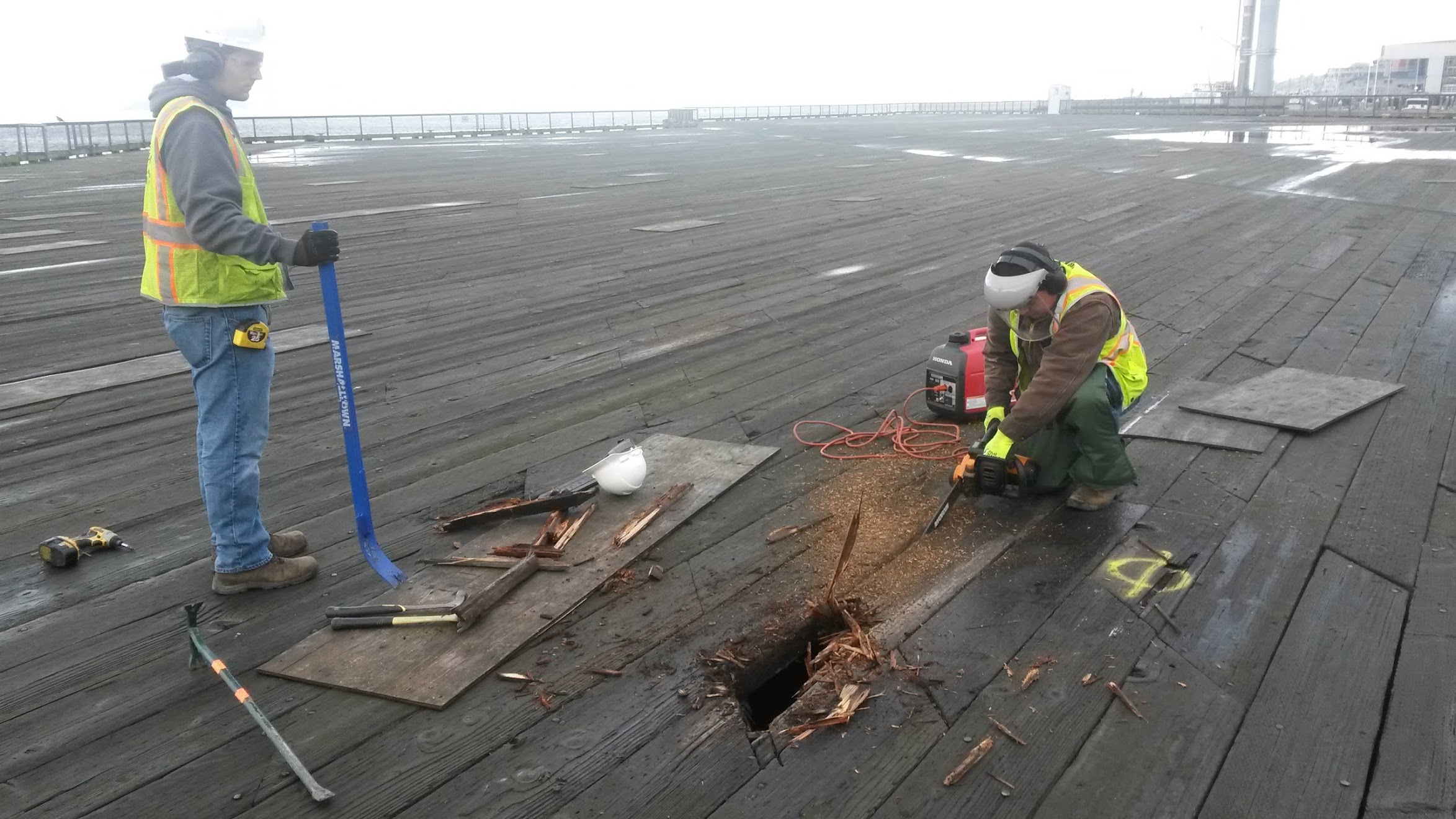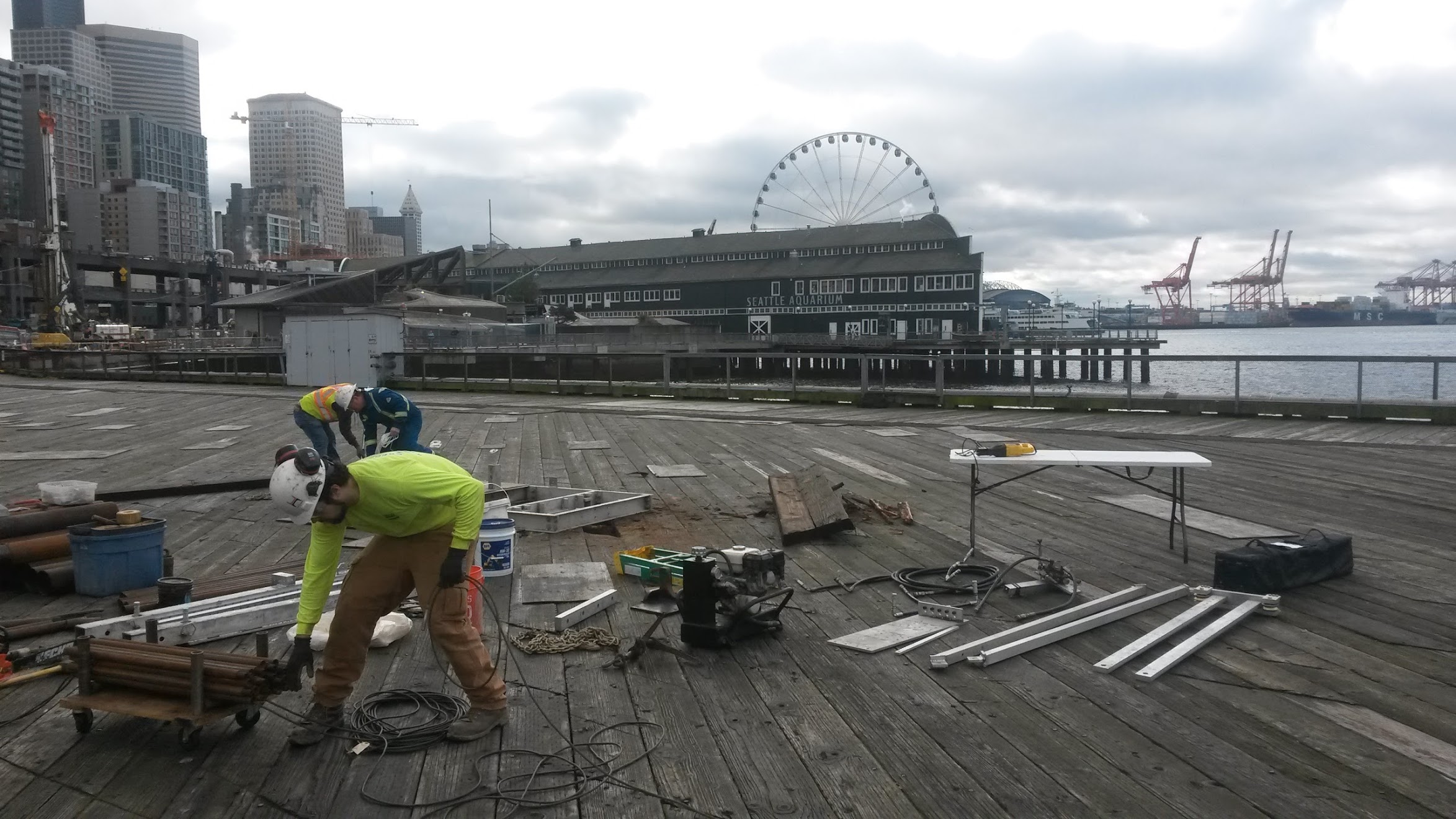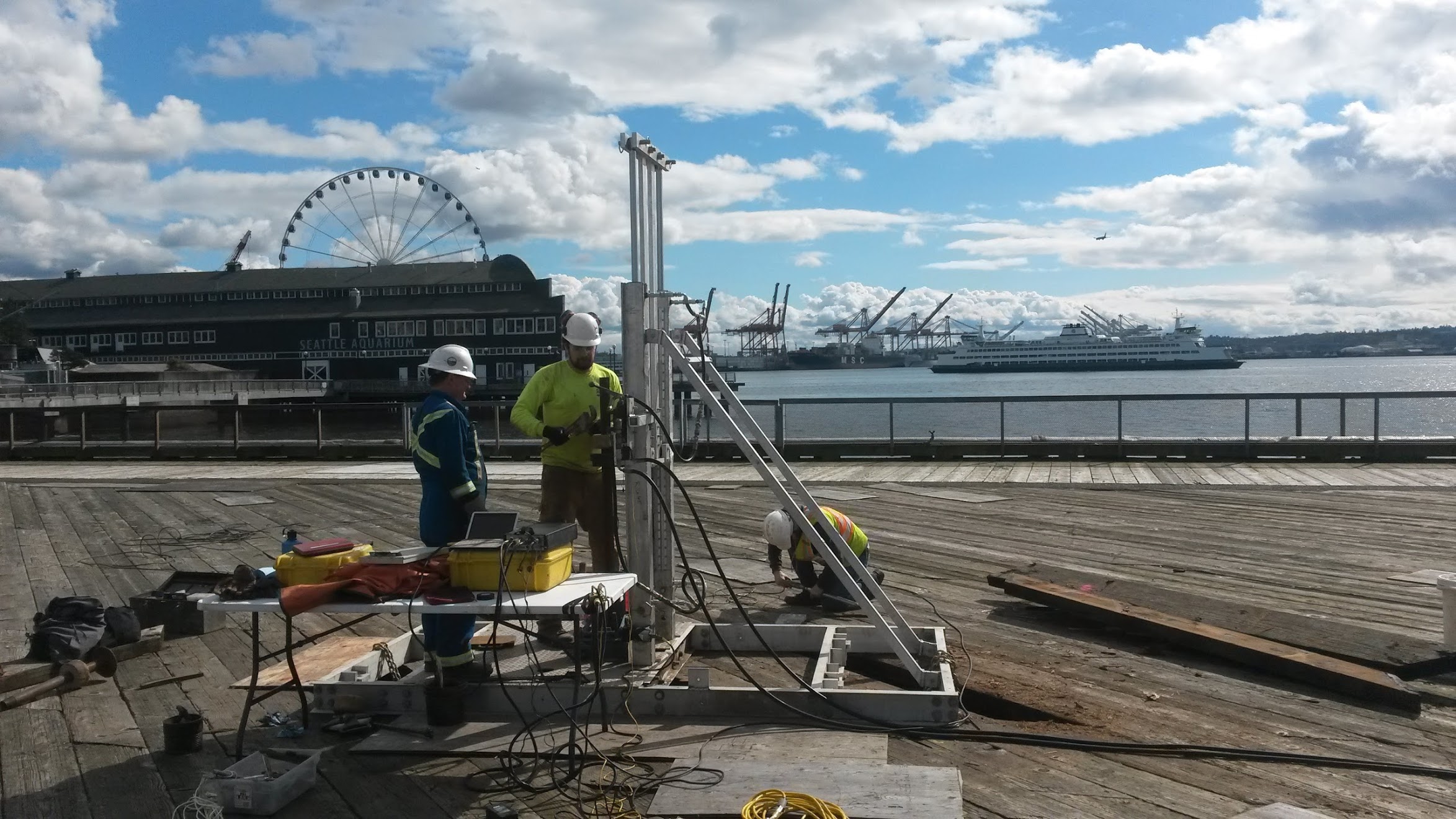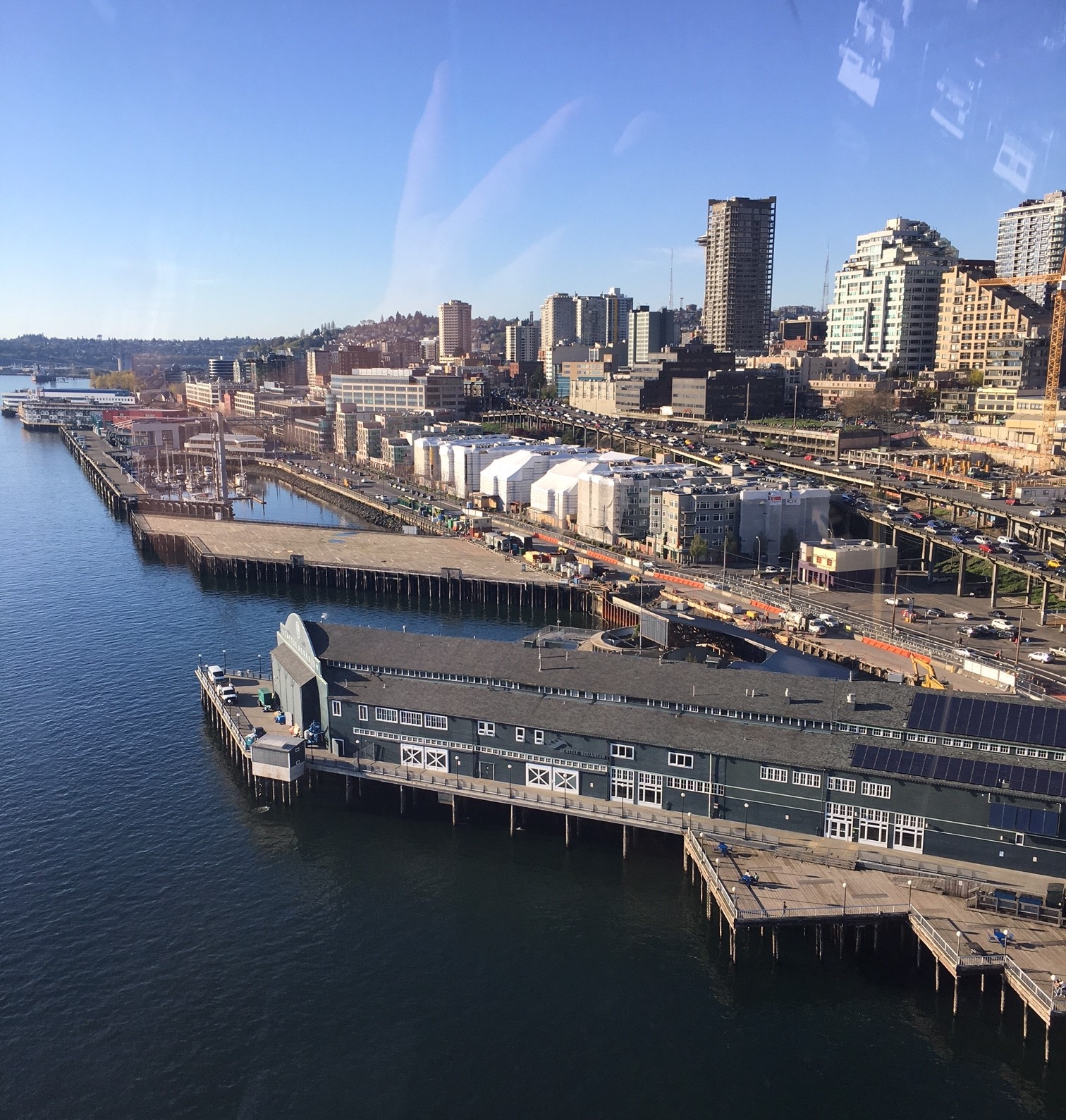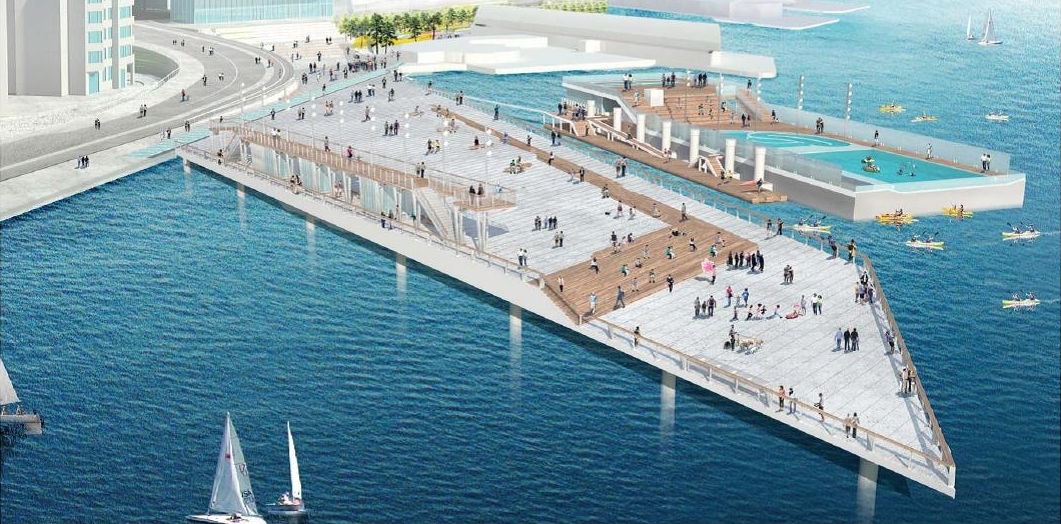For the second year, Aspect’s Senior Remediation Engineer, Adam Griffin, spoke to the AP Environmental Science class at Franklin Pierce High school in Tacoma. Adam told the students about the variety of ways he applies science and engineering every day in his professional life and said, “I left energized and encouraged by the next generation’s awareness.” Many of these students have already been accepted into college and are pursuing science and engineering fields. Way to go Adam and best wishes to the Franklin Pierce students!
Lea Beard Talks Tableau and EQuIS at ICEDM in Oregon
Aspect’s Lea Beard was invited to speak at the 7th Annual International Conference for Environmental Data Management (ICEDM) this week in Oregon. Lea’s talk is on using environmental data management systems such as EQuIS in conjunction with powerful graphical analytics systems like Tableau to easily produce reliable, beautiful insights into data.
Tim Flynn Spoke on Aquifer Storage and Recovery at the ASCE Seattle Meeting
Aspect's Tim Flynn was invited to speak about Aquifer Storage and Recovery at The American Society of Civil Engineers (ASCE) Seattle Section luncheon. Tim provided an overview of ASR, including objectives, applications, and regulatory permitting process, as well as several case studies.
Rebuilding a Seattle Landmark
Cone Penetrometer Test on Seattle's Pier 62
Enjoying live music and performances on the waterfront with ferries crossing in the background was once an annual summer tradition in Seattle. Piers 62 and 63, just north of the Seattle Aquarium, were home to the well-loved Summer Nights at the Pier and other events, but have been dormant recently because of the deteriorating condition of the aging twin structures.
Fast forward to the present, and Aspect is helping Seattle’s Department of Parks and Recreation revive the dream of hosting entertainment on the waterfront. As part of the Seattle Department of Transportation team, we have been performing geotechnical support for the reconstruction of Pier 62. Our geotechnical recommendations will inform design of the new pier’s foundations, creating a strong platform upon which to build a park that will reintroduce Seattle to Elliott Bay.
Before we can advise on how the foundations should be designed, we need to know what’s going on underground. These pictures, taken by Senior Staff Geotechnical Engineer Spencer Ambauen, are from our recent field work, where we conducted a Cone Penetrometer Test (CPT) to investigate the soils below the pier. CPTs are best suited to evaluate the types of loose granular and soft cohesive soils we expected to find there. Data collected from the CPT will inform the geotechnical analyses for the pier, such as liquefaction potential.
Cone Penetrometer Ready to Deploy
The team had to navigate around and cut through the existing structure to get the CPT through the water and soil layers. Due to the aging pier’s strict weight limits, we had to be cautious with what kind of rig we used. The skid rig shown here was light enough to meet the requirements and still advance the CPT through the upper soils.
This last picture looks down at the project area from Seattle’s Great Wheel. From that height, it’s exciting to imagine what the future will bring for the Piers. For more on plans for the Seattle waterfront, visit waterfrontseattle.org.
Collaborating to Solve Disputes Over Water in the Icicle Basin
Aspect recently helped facilitate an Open House in Wenatchee to solicit SEPA Scoping comments on the Icicle Strategy, a comprehensive water supply solution for the Icicle Basin in Wenatchee. The following Wenatchee World articles provide a great perspective on the collaborative nature of this effort.
World Editorial Board | Icicle water plan sets the example
by World Editorial Board | April 25, 2016
We could have had a lawsuit. That’s the modern version of the West’s traditional means of solving disputes over water. You know what they say about whiskey for drinking and water for fighting.
But what if you could bring all the combatants together, set shared goals, find common ground, and discover solutions that would meet the needs of all and serve the public good? You could skip the lawsuit, for starters.
We know this is farfetched. It sounds like pie-in-the-sky Kum Ba Yah-around-the-campfire idealism. But it is happening, just up the Icicle.
A collaboration known as the Icicle Working Group has released for public comment its water management strategy for the Icicle Basin. The group was formed three years ago at the request of the state Department of Ecology Office of the Columbia River and Chelan County in response to — what else? — a lawsuit over water rights, and decades of chronic problems. Tribes, irrigators, farmers, environmentalists, local, state and federal agencies came together. The goal was to devise a plan that would substantially improve streamflows, sustain the Leavenworth National Fish Hatchery, improve the reliability of the agricultural water supply, enhance Icicle Creek fish habitat, supply additional domestic water, protect tribal and sport fisheries, and do it all within the bounds of federal wilderness law.
According to the strategy this would be accomplished first with aggressive conservation. The release valves would be automated on the alpine reservoirs that store runoff for irrigation — Square, Klonaqua, Eightmile, Colchuck, Snow and Nada. Flows could change instantly depending on conditions, instead of having someone hike into the wilderness to turn a wheel. Open irrigation ditches would be replaced by pressurized pipe. The leaky fish hatchery equipment would go and facilities redesigned for efficiency. Domestic water users in Leavenworth and Chelan County would be offered efficiencies through metering and pipe replacement.
Perhaps the most controversial project would restore the long-broken perimeter dam at Eightmile Lake and raise the lake to its authorized level. This would increase storage from 1,375 to 2,500 acre feet, and inundate some currently dry wilderness, but provide a substantial benefit in stored water.
The efforts they estimate will add 77 cubic feet per second to more than double the Icicle’s base flow in a normal year. It would add 5 cfs for domestic use and 4 cfs for agriculture.
The cost of it all is estimated at $65 million to $85 million, so there is far to go. The plan can be viewed at wwrld.us/IcicleWorkGroup.
Through whatever prejudice you view water plans, this one has a chance to work where 15 years of fighting failed. The group came together and through give-and-take collaboration designed a water plan to benefit everyone. In itself it is a remarkable achievement, and if we have any wisdom it is an example for many to follow.
This is the opinion of The Wenatchee World and its Editorial Board: Publisher Rufus Woods, Managing Editor Cal FitzSimmons and Editorial Page Editor Tracy Warner.
Public comment urged on Icicle Basin water plans
by Christine Pratt | April 21, 2016
Erin McKay, a biologist with Chelan County, explains how a proposed water market would operate at the Icicle Work Group open house in Leavenworth Wednesday.
LEAVENWORTH — A comprehensive package of proposals to increase water supply in the Icicle Creek Basin through water-storage automation in the Alpine Lakes Wilderness and aggressive conservation is available for public comment through May 11.
If implemented in full, the plan will support area population growth while also supplying fish and irrigators with the water they need through 2050.
That’s the opinion of the Icicle Work Group, the diverse collection of ag, conservation and recreation interests, tribes, and local, state and federal agencies that have worked over the last three years to reach an uncharacteristic consensus on a plan they call the “Icicle Creek Water Resource Management Strategy.”
“Fifteen years ago, we thought it was impossible to come up with solutions for Icicle, and now here we are, we have solutions for Icicle,” Mike Kaputa, director of natural resources for Chelan County.
The state Department of Ecology and Chelan County convened the work group in December 2012 in a court-approved effort to use consensus-building instead of litigation to resolve a City of Leavenworth suit against the state Department of Ecology over water rights.
Competing interests for Icicle Creek water have made the Icicle Basin and the Leavenworth National Hatchery a contentious battleground, host to a proliferation of past and current lawsuits over water use and rights.
If the Icicle Work Group’s plan is successful, the City of Leavenworth/Ecology suit will be dropped.
The 11 major proposals in the group’s resulting plan have a collective price tag of an estimated $64.2 million, but are estimated to add an additional 77 cubic feet per second (cfs) flow in the Icicle creek in an average year and 47 more during a drought year.
Two of the 11 proposals have the biggest cost-benefit return. They are:
The automation of six high-mountain lakes in the Alpine Wilderness that have been for water storage since the early 1900s. These lakes, Square, Klonaqua, Eightmile, Colchuck, Snow and Nada are equipped with “gates” that now must be operated manually to release flow for irrigation and operations at the Leavenworth National Fish Hatchery.
Automation would follow the “Yakima Teacup” model. These are water-storage reservoirs that can be tracked and controlled remotely, using radio signals, solar panels for energy and the Internet. View it at http://wwrld.us/yakimateacup.
The system would make it easy to regulate releases when their water-rights holders — the Icicle-Peshastin Irrigation District and (for the Snow Lakes and Nada Lake) the hatchery — need them for operations.
The plan would also restore Eightmile Lake to its permitted volume of 2,500 acre feet by repairing a dam there that broke long ago and was never repaired.
Aggressive water conservation and upgrades at the Leavenworth National Hatchery. This would include replacing existing raceways — the rectangular, concrete tanks where fish are raised — with circular tanks that can reduce water use by approximately 75 percent.
The aged and inefficient hatchery accounts for 42 cfs in surface water use from the creek, another 15 cfs from groundwater wells that are linked to the Icicle Creek and as much as 50 cfs released from the Snow Lakes to supplement Icicle Creek flows. This compares to 2 cfs that the entire City of Leavenworth draws in Icicle Creek surface water.
Other measures include replacing open irrigation ditches with pressurized pipeline to reduce waste and leaks; reducing domestic consumption by improving metering, replacing old pipe and promoting low-water landscaping; fish-favorable habitat improvements in Icicle Creek; improvements to a tribal fishing spot near the hatchery and creating or re-establishing fish passage to upper Icicle Creek.
The whole package of projects are necessary to achieve the goal of gaining 26,800 additional acre feet of water at a cost per acre foot of $2,400.
“You end up with some cheap projects and some expensive projects, but the overall cost of $2,400 per acre foot is still a very affordable cost,” Dan Haller, the Aspect Consulting engineer who helped put the plan together. “In water markets, it’s common for people to pay $1,500 to $3,500 per acre foot.
The current public comment period is an optional step, Chelan County’s Kaputa said, to hear what the community thinks about a plan that will impact their city, county, irrigation district, area hatchery and the fish in their neighborhood river.
If response to the package of proposals is favorable and receives its environmental approval from the state, more detailed analyses leading to work on then specific projects could begin in fall 2017.
“We want people to be aware of that, and get their comments on whether we have the right goals. Is this the best project to meet those goals?” Kaputa said.
Send comments by May 11 to Mike Kaputa, mike.kaputa@co.chelan.wa.us or 411 Washington St., Suite 201, Wenatchee, 98801.
Rebuilding Around the World: Henry Haselton’s Ongoing Volunteer Work
Principal Geotechnical Engineer Henry Haselton is providing pro bono engineering services to help rebuild and protect schools, villages, and farms affected by natural disasters in Nepal and Tanzania.
Henry has been working with All Hands Volunteers to rebuild schools that were destroyed after the massive earthquake in Nepal in April 2015. Most recently, he helped with site development and foundation recommendations for the East Point Academy in Melamchi, which is about 25 miles north of Katmandu. The Nepalese government prepared standard school designs, and they need engineering help to make the structures work at particular locations. He also designed an earthquake-resistant retaining wall to support the school in its new location. Henry is now embarking on work for another school project higher up in the Himalayas.
photo courtesy of All Hands Volunteers
Earlier this year, Henry provided geotechnical consultation for a sugar cane producer who is affiliated with a non-governmental organization south of Moshi, Tanzania to help alleviate flooding of villages and farms in the area. The engineering work was led by master’s students from Tu Delft in the Netherlands. Henry’s work focused on extending levees and installing weirs to mitigate flooding, and included recommendations on geotechnical field and laboratory testing, slope stability analyses, and general geotechnical recommendations for the levees.
Matching the Quality of the Words with the Quality of the Science
Everyone at Aspect writes something. Whether it’s a short memo to a property owner, a long report to a regulator, an email to a potential client, or a web story talking about writing. We generate a lot of words, and very few of them come easy. Yet, writing is crucial—for many reasons, but primarily because the quality of our words should match the quality of the science.
In a recent technical exchange, a panel of senior staffers shared their best practices for how we convey the conclusions and recommendations we form as a result of our scientific collaboration through our writing.
Our staff can be out in the field collecting and reviewing data, devising creative ways to approach and solve problems, and doing overall stellar work. But if we can’t clearly articulate what we did and why we did it, then all of our work can be lost in translation. Taking ideas, solidifying them into a sort of outline, and then turning to blank page to try and translate all of that into words in a clear, concise fashion can be an extremely daunting task.
Indeed, each panelist admitted that writing is hard work, especially when we hold ourselves to a high standard for delivering quality results. They shared how they approach a writing assignment and tackle challenges that come up along the way. The discussion sprung from four key questions:
- How do you start a new writing assignment?
- What do you look for in writing from your project team?
- What is the best advice about writing that you’ve received?
- What is your greatest personal writing challenge?
Over the course of our talk, we learned everyone has a different way of combating the fear and angst generated from a blank page. Some meticulously outline and then fill in section by section. Some dump any and all information that may be relevant and then carve out the document from the raw material. Some schedule themselves a block of time to write and stick to it. Some avoid it until the deadline looms near. Some know the conclusion and write their way back from it, some figure out the ending as they go along. We did find some common ground among us—we all feel a little lost at the very start of a project, and we all look to existing reports to guide the way.
We left with the knowledge that though there’s not a perfect tool or exact method for filling the page, knowing what your writing process is – i.e., what works for YOU—is the most important part of writing successfully. Developing a writing style and rhythm is an ever-evolving process.
Too Much Flare, Not Enough Gas
Aspect’s Peter Bannister, along with King County’s Dan Swope, will co-present at the 2016 Solid Waste Association of North America (SWANA) Northwest Regional Symposium in Vancouver, BC on Friday April 8th.
As landfills age and landfill gas generation inevitably declines, landfill operators face the problem of using legacy collection and control systems that weren’t designed to harvest dwindling amounts of landfill gas. Simply continuing operation of these oversized systems is often not practical or financially prudent.
Peter and Dan will present the Enumclaw Landfill case-study and focus on how landfill gas forensics has proven to be an innovative solution to coaxing better performance out of existing landfill gas collection and control systems, and designing downscaled systems, at closed landfills in King County, Washington State.
Peter and Dan will present Friday morning at 10:30AM in technical session 6B – Advances in Landfill Gas Management. Learn more about the conference HERE and view the agenda HERE.
We look forward to seeing you there!
Evaluating Ground Movement from Outer Space: Annaliese Eipert Discusses InSAR satellite technology at AEG meeting
Many of the questions Aspect’s infrastructure staff have on a project revolve around soil movement. We may need to know how much a building’s foundation has settled, or if a steep slope is starting to fail, or the furthest extent of a sinkhole. A new technology— interferometric synthetic aperture radar (InSAR)—is helping us gather better information to answer those questions. Project Geologist Annaliese Eipert will share Aspect’s local experience with InSAR at the monthly Association of Environmental & Engineering Geologists (AEG) meeting in Seattle on Thursday, March 17.
InSAR measures the changes in ground surface elevation by recording the distance between the ground and a satellite over time, and it does so with accuracy down to the millimeter. It can pierce through rainclouds and cover of night to document conditions without interruption. Unlike Global Positioning System (GPS) technology, which covers conditions for a fixed point, InSAR can collect data on the movement of large parcels of land. It also acts as a time machine of sorts, with the ability to study data gathered in years past. InSAR’s functionality gives us more detailed data to find problematic changes in ground surface and formulate appropriate recommendations and solutions.
InSAR image showing accumulated ground motion in the greater Tacoma area. Image courtesy of TRE-Altamira.
Annaliese’s presentation will focus on how we used InSAR data to help determine the cause of an approximately five-mile-long swath of widespread apparent uplift on the order of one inch in the Federal Way area that was observed between 2007 and 2009. She will also explore the potential causes of observed subsidence along Puget Lowland river valleys and of ground surface deformation in general, as well as the applications and limitations of using InSAR analysis for geologic and geotechnical engineering investigations in comparison to high-resolution GPS and Light Detection and Ranging (LiDAR) technology.
Annaliese will be co-presenting with Giacomo Falorni from TRE-Altamira, a globally recognized firm with comprehensive expertise in applying InSAR data to large infrastructure projects. Giacomo will provide an introduction to the technology itself and discuss how it has been used on infrastructure and environmental projects around the world.
Aspect’s Owen Reese and Tom Atkins presenting at NEBC’s Stormwater Conference on March 9th
On March 9th in Tacoma, the Northwest Environmental Business Council (NEBC) will host the 9th annual Managing Stormwater Conference in Washington. This focused one-day conference is Washington's leading stormwater event, convening regulated companies, governments, solution providers, and regulators to share solutions to the challenges of stormwater management. The conference’s educational sessions will cover both basics and advanced topics in the areas of industrial stormwater management, construction stormwater management, municipal stormwater management, and cross-cutting issues. Aspect is proud to be a premier sponsor of the conference. Aspect’s stormwater engineers Tom Atkins and Owen Reese will also be contributing to two of the educational sessions.
Tom will present a case study in the Industrial Treatment Project Showcase Session; his presentation will highlight deployment of a customized treatment system that successfully met tight time constraints, overcame challenging site conditions, and achieved NPDES permit requirements.
Owen will moderate the cross-cutting issues session on the “Impact of Third-Party Lawsuits”. This session will discuss Clean Water Act lawsuits by outside parties as a de facto enforcement tool for stormwater permit compliance, walk through the process of a typical citizen suit, and share what can be learned from the outcome of these cases.
Learn more about the conference HERE.
Icicle Creek Watershed Project Launches SEPA Scoping
Over the last three years, the 212-square-mile Icicle Creek watershed in Chelan County has been the focus of significant evaluation to address chronic water supply issues.
Recently, the Icicle Creek Work Group (IWG)--composed of a diverse set of local, state and federal agencies, tribes, irrigation and agricultural interests and environmental organizations--reached a key project milestone with the launching of State Environmental Policy Act (SEPA) scoping for a diverse range of projects to help fish, farms, and flows. The purpose of SEPA is twofold: it encourages public involvement in selecting project alternatives and it ensures environmental values are considered by state and local agencies before committing to action.
The proposed projects run the gamut from retrofitting existing reservoirs in the Alpine Lakes Wilderness to benefit instream flow to designing new infrastructure at the Leavenworth National Fish Hatchery to improve fish populations. In addition, proposed conservation efforts—to improve irrigation and domestic use efficiencies--look to promote both instream and out of stream benefits.
The timeline for the SEPA process will run over the next 90 days, followed by the kick-off of the Environmental Impact Statement (EIS) evaluation, which will take place over the next two years.
Learn more about the proposed projects here.
Inspiring Young Minds with the Power of the Elwha River Restoration
Watching nature reclaim its natural habitat is awe inspiring. The Elwha River restoration—kicked off by the largest dam removal project in the world—is literally recreating the landscape along its path through the wild Olympic Peninsula. Through video, narrative, and photos, this recent Seattle Times story describes the status of the project in compelling detail.
Aspect is excited to see this worthy story get the attention it deserves, particularly because we know first-hand the power of the Elwha to inspire young minds. Aspect has been a long-time sponsor of NatureBridge, a nonprofit that gives students an up-close and personal introduction to environmental education. NatureBridge has been using the Elwha River restoration project as an outdoor lab to inspire and educate the next generation of environmental stewards. When your classroom is a roaring river and your desk is a log along a newly formed streambed, the possibilities for learning seem endless.
Environmental Data Management Done Right: EQuIS in Action
Aspect’s Data + Mapping team uses time-saving tools to streamline our data analysis and processing to inform conclusions, design, and reporting—at the center of which is the environmental data management system EQuIS. Having long been leaders in the field of environmental chemistry data management, we have recently migrated from home-built, custom database systems to this industry standard. Our expertise with this powerful software has been bolstered by Senior Staff Data Scientist Lea Beard, who joined Aspect last summer. She is an EQuIS expert who turns her deep analytical chemistry and data management skills into efficiencies and insights for Aspects project teams and clients.
Why we use EQuIS:
- It is reliable and stable, ensuring the integrity of our clients’ valuable data.
- It helps us to process, review, manage, and analyze data as rapidly as our projects move.
- It enables us easily tailor reporting outputs to the nuanced needs of a project.
- It ensures adherence to standards and helps us to maintain consistency across projects.
- It safeguards our data’s compliance with environmental regulatory standards.
Created by EarthSoft, EQuIS is optimized to handle a broad-range of environmental data—particularly environmental chemistry data. EQuIS gives us the “brain” to formulate answers to the questions its users may ask, such as:
- How many fish passed through this culvert last year?
- To what extent have the concentrations of chlorinated solvents in groundwater responded to the remediation system operation?
- Was the Reporting Detection Limit for Lead low enough to meet the Quality Assurance Project Plan?
- What were water level elevations in this monitoring well network from 2010 to 2015?
Having this framework already in place saves us and our clients time and money that would otherwise be spent building or customizing software to meet ever-changing needs. EQuIS also contains built-in solutions for common problems encountered in environmental reporting. It’s been put to the test by a wide cross-section of users—consultants, public agencies, corporations, laboratories—who have contributed their feedback and worked out bugs as they go. With a diverse group of users informing how it works for them, EQuIS is able to keep up with the state of environmental reporting.
Case Study in How EQuIS Simplifies Our Data Collection
Our staff heads out to a project site, tablet loaded with Fulcrum in hand, and begins to collect data. When the day is done, they send samples to the lab for analysis. Taking the field observations and measurements from Fulcrum and the analytical results from the lab, Lea feeds these two data sets alongside one another into EQuIS. With these normally separate datasets stored together in one spot, EQuIS makes it easy to access and search. Automated alerts and reporting based on preset parameters (perhaps a particular contaminant level has been detected or exceeded) means that project teams can make timely decisions about their next round of data collection or further investigation/inquiry. Reversing the direction of the data, Lea can then feed those results back into Fulcrum, sending it out to the team in the field, ensuring they have the most up-to-date information at the site. In the past this information exchange would have taken a week, but with EQuIS and Fulcrum, it takes mere hours.
EQuIS weaves together the data streams and creates meaningful output.
A Helping Hand Sets Clients on the Right Data Management Path
While EQuIS has the power and flexibility to make managing data easy, it can be a bit daunting to learn and implement. Lea helps guide clients through the set-up process – deciding on reference values, figuring out which lab electronic data deliverable formats to use, building reporting standards – forming the framework of their ongoing data management needs. From there, Aspect can help clients create software customizations to make summing groups of analytes (such as polychlorinated biphenyls) straightforward and reproducible, and offer assistance on making data easy to export into Ecology’s Environmental Information Management (EIM) database. Our in-house experience with EQuIS allows us to help clients tell their project’s story clearly.
Having someone like Lea at the helm of a program like EQuIS allows us to efficiently collect, manage, and report on data, ensuring that the rest of our team can focus on what they’re best at: science and strategic advice for our clients.
Aquifer Storage and Recovery: An Innovative Approach to Water Storage
After years of work, Aspect recently finished a pilot test that will help the City of White Salmon (City) implement one of only a handful of Aquifer Storage and Recovery (ASR) systems in the state. ASR—essentially taking advantage of natural geology, man-made wells, and climate patterns to create an underground reservoir—is an attractive water supply concept. It’s relatively low-cost (compared to building an above ground reservoir), has a small environmental footprint, and in arid climates reduces losses from evaporation. However, permitting of an ASR system involves overcoming technical operational hurdles that hinge on two key questions:
- How much water are you getting back? (recoverability)
- Will injection or withdrawal affect water quality? (Washington State Department of Ecology’s (Ecology) antidegradation policy)
During Aspect’s monthly technical exchange series, Aspect’s Tim Flynn, Joe Morrice, and Jared Bean gave a presentation and explained Aspect’s experience with ASR in the state and what it means for future water supply.
Creating an Underground Reservoir
Essentially, this concept uses nature’s pre-built reservoirs (aquifers) to create an underground reservoir or tank to store water when it’s plentiful and withdraw it when it’s scarce. In water resources terminology, ASR typically uses seasonally available surface water to help recharge—or move water from the surface into the ground—an aquifer. It does this by capturing excess water during the winter and spring months, when surface water flows are generally high and water system demands low, and injecting that water via a well (or engineered infiltration basin) into the underground aquifer. During the dry summer season, water is withdrawn for use when surface water flows are low and water system demand is at its peak.
Figure 1. ASR System Cycle
Source: www.groundwatergeek.com
The basic components of an ASR system include:
- The right kind of Aquifer. Bedrock or unconsolidated aquifers may both be suitable for ASR, but ideally the target aquifer would be bounded by geologic faults or other barriers that limit the flow and loss of stored water in storage before it is recovered from the aquifer.
- Source water of suitable quality. This is typically surface water from rivers or streams, but with the appropriate water quality treatment and permitting process can include stormwater runoff, remediated groundwater, reclaimed water, and industrial process water. These sources should be chemically compatible with ambient groundwater and do not contain constituents that would violate the State groundwater quality standards, including the antidegradation standard, or can be treated to meet these standards.
- A way to put water in and to take it out. This means infrastructure for ASR source water diversion, treatment (as needed), conveyance, and injection to the subsurface through one or more wells, with subsequent pumping to recover stored water.
ASR in Washington State
Although ASR has been in practice for many years in other parts of the nation, it’s a fairly new concept to northwestern states that have typically relied on mountain snowpack as a form of water storage to provide supply during summer months. Because of Washington’s recent drought and the scarcity of water in many surface water basins, especially during summer low flows, ASR’s popularity is growing. In Washington state, there are approximately 9 projects in development. The existing policy framework for ASR in Washington state came about in the early 2000s with two developments:
- In 2000, the state’s expansion of the definition of “reservoir” to include “…underground geologic formation(s)… as part of an (ASR) project” (RCW 90.03.370); and
- In 2003, Ecology’s adoption of the ASR rule (WAC 173-157) which established standards for ASR projects, including standards related to water rights, water quality, water treatment, and geotechnical impacts.
Aspect is currently working on three ASR projects in Washington, Arizona, and California. Our ASR projects locations in the PNW currently span western, central, and southern Washington and include both basalt (bedrock) and unconsolidated, glacial outwash host-aquifers.
Figure 2. Groundwater Recharge Projects in Washington State
(ASR = Aquifer Storage and Recovery; SAR = Shallow Aquifer Recharge)
Source: http://www.ecy.wa.gov/programs/wr/asr/asr-home.html
City of White Salmon ASR
The City has historically relied on surface water from Buck Creek for the City’s water supply. In 2002, the City switched to groundwater wells as their primary supply but with decreasing well yields and limited water rights along with the WA Department of Health issuing a moratorium on new connections the City is seeking new alternatives to boost their water supply. One of these alternatives is to explore the possibility of ASR. Aspect has helped the City pursue this option by coordinating with Ecology throughout the process. After receiving an Ecology grant, and approval of the feasibility study, an AKART analysis was completed which secured Ecology approval for pilot testing.
The most recent pilot test involved the injection of 32 acre-feet of water over the span of 53 days (135 gallons per minute, or about 200,000 gallons per day). With the current well and conveyance configuration the City can expect to inject, store and recover about 100 acre-feet per year, which provides approximately 25% of peak (summer) demand. These numbers are with current operational constraints of a gravity fed non-continuous injection. If the City upgrades to pressurized injection (continuous) then they can expect more than 300 acre-feet per year, or about 74 percent of peak summer demands.
Figure 3. Conceptual Hydrogeologic Model of White Salmon Project Area
Source: Aspect Consulting
One major concern is to make sure the quality of the water isn’t degraded while in ‘storage’. The pilot test showed the formation of disinfection byproducts (DBPs) from treating the injected water with chlorine prior to injection. Ecology’s antidegradation policy says injected water cannot impact native groundwater or source water quality. Groundwater quality monitoring throughout the pilot test showed that DBPs did form in the injection water, but quickly dissipated in the aquifer.
The other hurdle is the recoverable quantity of water or the amount of water recouped from what was originally injected, i.e., “recoverability”. Ecology requires that the same water that is stored be recovered, and any stored water that migrates past the capture zone of the recovery well is no longer available for use. Aspect has estimated, based on water quality monitoring and aquifer hydraulic response to injection and recovery, that the White Salmon ASR system has 85% recoverability of injected water.
Aspect is engaged in ongoing discussions and interactions with Ecology’s water quality and water rights permitting programs regarding these issues and how to efficiently complete the required permitting while protecting groundwater quality and water rights, including instream flows for the City of White Salmon and other ASR projects.
The interpretation and understanding of water quality and water right permitting requirements for ASR projects is evolving as project proponents advance their plans through Ecology. Aspect will continue to work with clients across the state to use ASR as a viable option in providing water where and when it’s needed most.
Meet Adam Griffin
Aspect is excited to welcome Adam Griffin to our Environmental team. He recently joined us as a Senior Remediation Engineer working from our Bainbridge Island office. Adam has 10 years of remediation experience across the country and internationally, supporting projects in Europe and South America. His experience is focused on the design and implementation of in-situ remediation approaches at commercial, industrial, and mining sites. Adam received his B.S. and M.S. degrees in environmental engineering from the University of Tennessee and has worked in the Northwest for five years.
As part of his introduction to Aspect, Adam hosted a technical exchange for the staff. The presentation highlighted his broad experience with in-situ remediation technologies, or the cleanup of contaminated media in place as opposed to pumping or removal for aboveground treatment. Every site’s conditions are different, and therefore developing a sound Conceptual Site Model (CSM) allows the “tuning” of in-situ remediation technologies for successful implementation. Adam shared examples of unique site conditions, such as soil geochemistry, high-flux aquifers, and stratigraphic constraints, and then explored how to tailor an approach and design to allow successful implementation of the selected technologies. He walked us through five case studies spotlighting some of these methods that have led to successful site remediation.
When he’s not contemplating aquifer conditions or remediation geochemistry, Adam enjoys camping and kayaking around Western Washington, accompanied by his wife and their two dogs.
The New Sound Transit U-Link Rail Extension: Understanding Seattle’s Geology
The U-Link light rail extension will open on March 19th—a full six months ahead of schedule and $100 million under budget. This new car-free transportation option for the Seattle area creates a previously unheard of eight-minute UW-to-downtown ride and an under an hour trip from Husky Stadium to Sea-Tac.
This transit game-changer was made possible by routing the light rail through two parallel three-mile-long, large-diameter, soft-ground rail tunnels. The tunnels extend from downtown Seattle, beneath Capitol Hill with a deep station in the Broadway area, then cross beneath the Montlake Cut and run to another underground station near Husky Stadium on the University of Washington Campus.
In an article on MyNorthwest.com, Sound Transit spokesperson Bruce Gray said: "This project has gone fantastic for us. This is one of those projects where we had time and budget built in for a lot of risks that were out there before we started construction and things went smoothly and we didn't have to dip into that time or money to deal with any of the risks. Things went as well as they possibly could have."
With an underground project of this size and scope, understanding subsurface conditions early and clearly conveying risk was key to project success. With that in mind, Aspect was hired to lead the geologic analysis and hydrogeology disciples, and provide planning and field support for the exploration program. Our knowledge of regional geology and expected variability in soil properties allowed us to implement a risk-based approach in collecting additional subsurface information. Results of this approach were used to target explorations to areas where additional subsurface information would significantly reduce design and construction costs and contractor contingencies.
Aspect’s approach resulted in significant cost and schedule savings compared to previous exploration approaches that relied on more numerous and costly uniformly spaced explorations.
It is projected that this $1.9 billion project will add 71,000 riders to the light rail system by 2030.
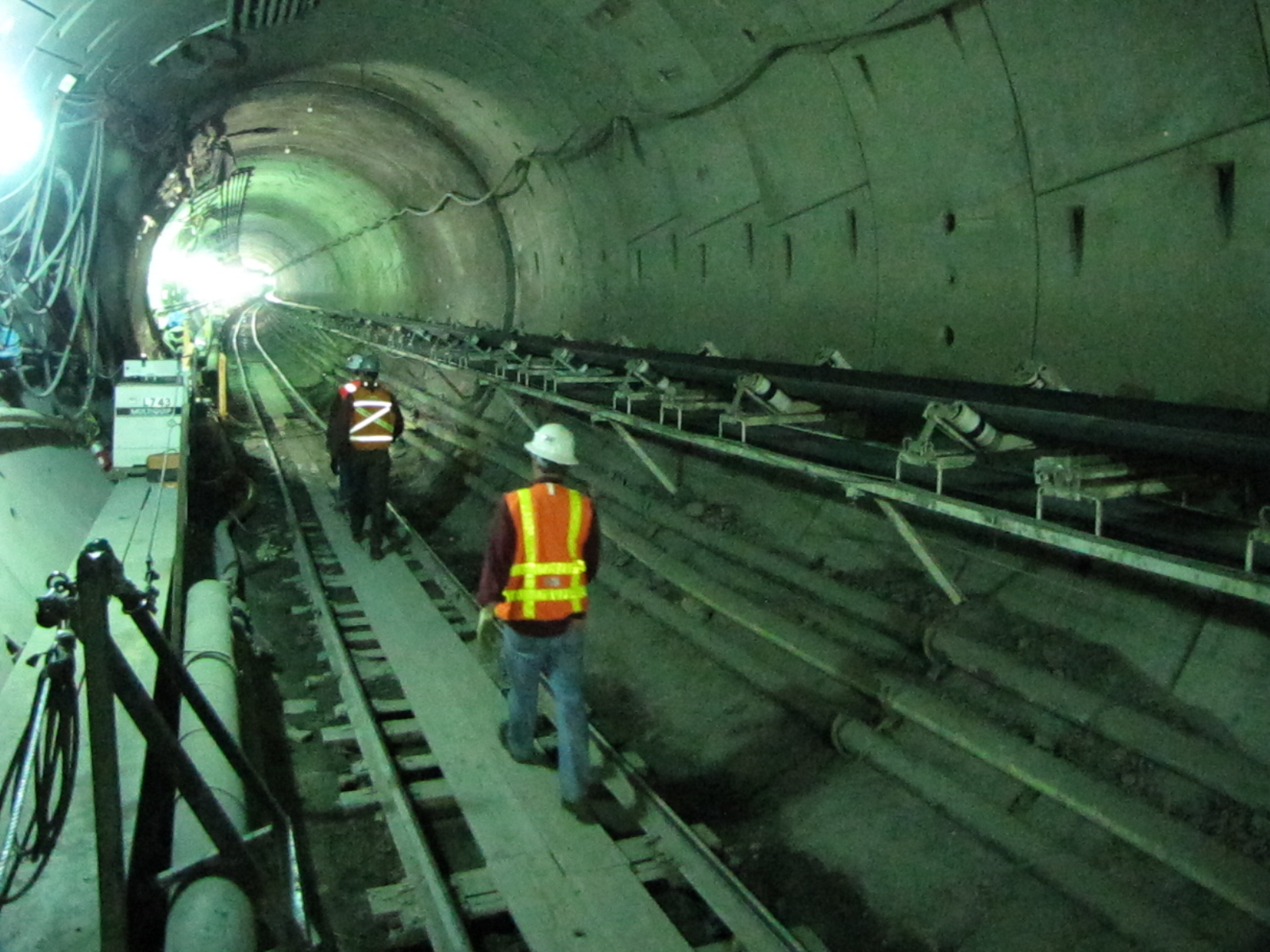




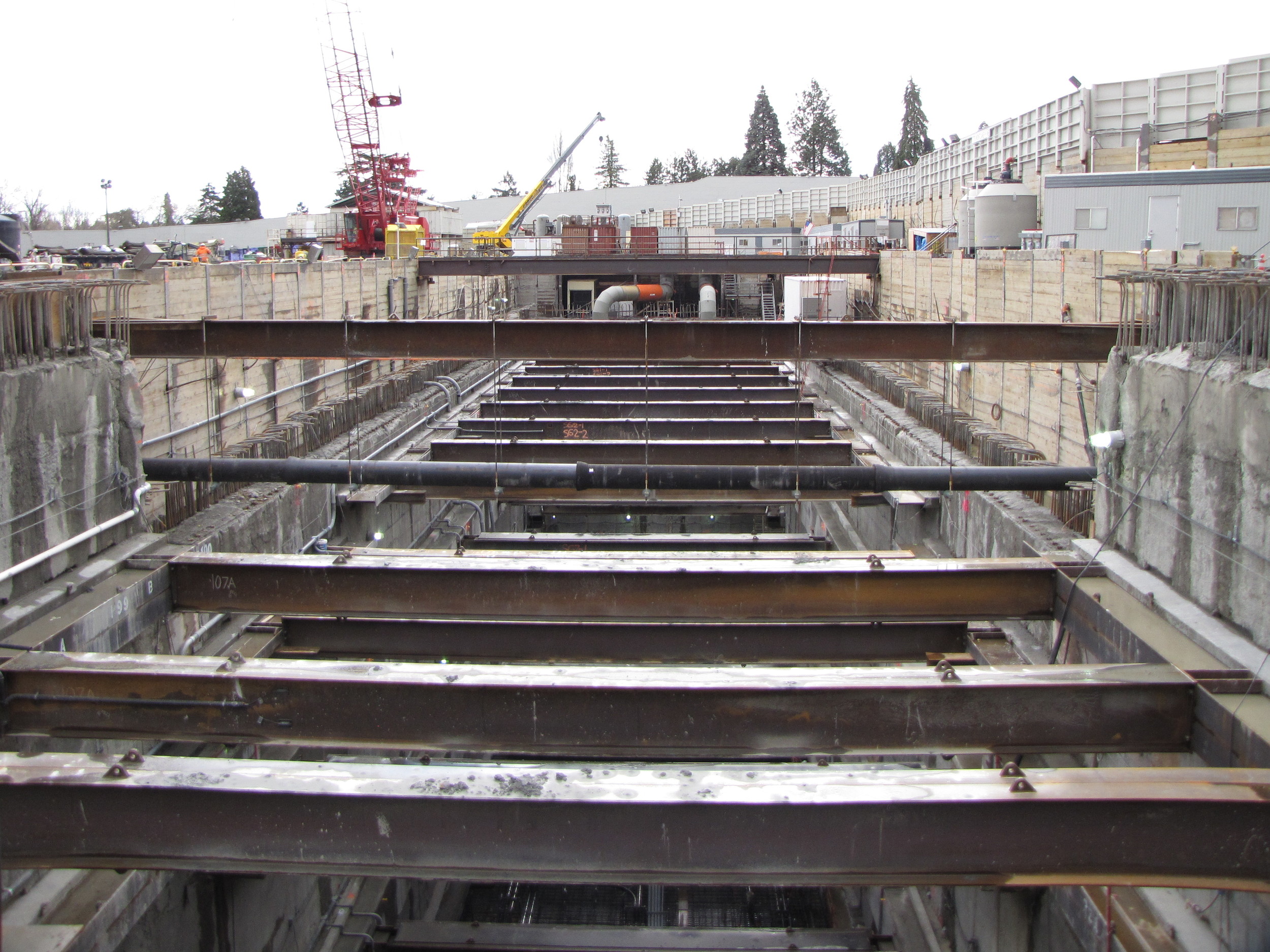
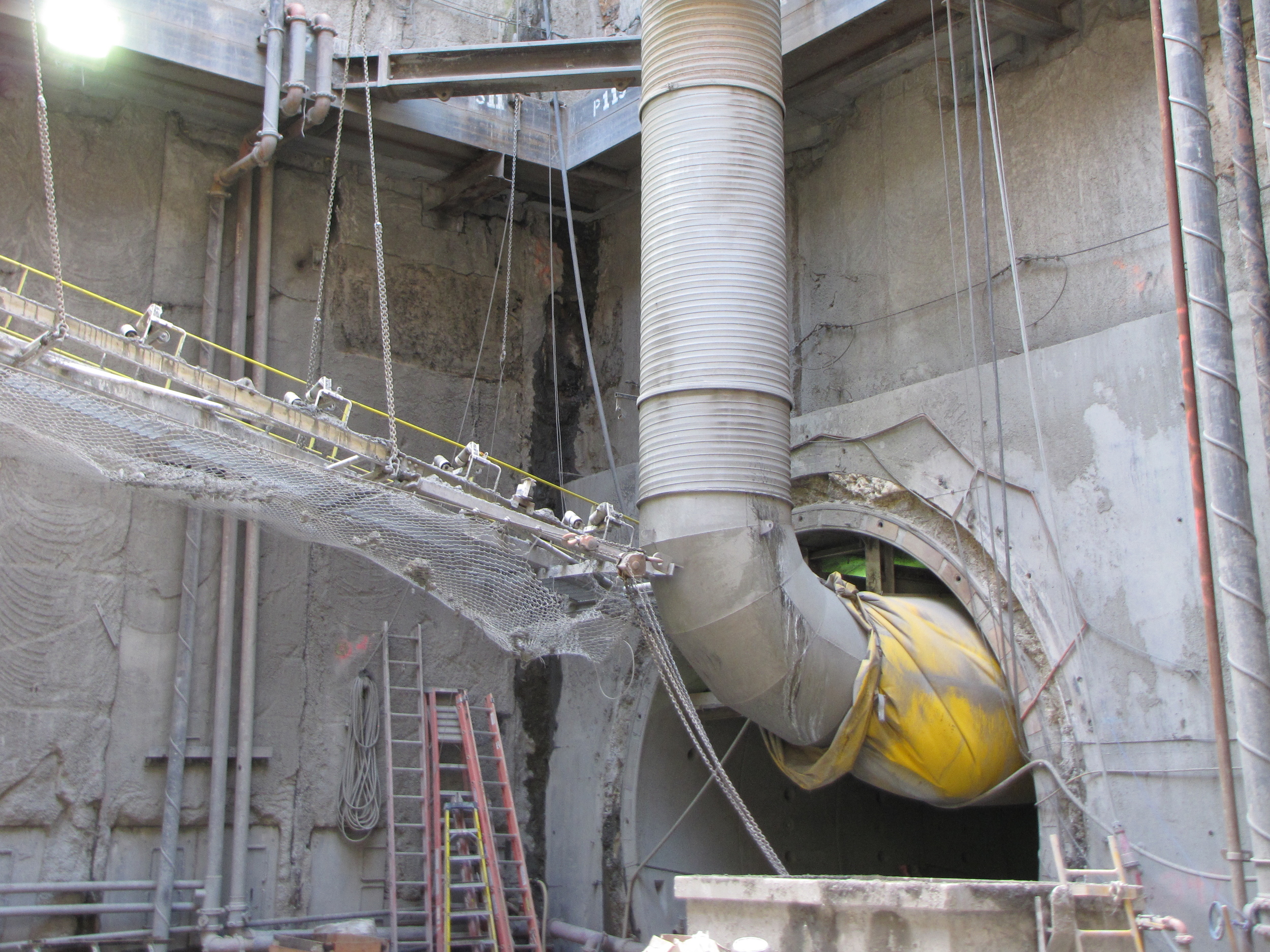
See Aspect at the Yakima Ag Expo January 7th and 8th
Come visit us at our booth at the Yakima Ag Expo on January 7th and 8th at the Yakima Valley Sundome. Members of our water resources team will be providing one-on-one water rights evaluations for conference attendees. We’ll be there to answer your questions about current water right trends in Washington state, and handing out some free goodies as well.
2015 - It's Been a Great Year!
Banking Water for Future Use
The future water availability in many areas of Washington State is uncertain. To address these uncertainties, Aspect is working with Spokane, Stevens, and Pend Oreille counties to develop a regional water bank which will allow for redistribution of water rights between buyers and sellers in the Little Spokane watershed.
Aspect’s Carl Einberger co-authored an article in the American Water Resources Association Newsletter detailing this essential project.
A Look Inside Vapor Intrusion
When volatile chemicals have the potential to migrate from contaminated groundwater or soil into an overlying building—i.e., vapor intrusion (VI)—a whole new layer of complexity is added to environmental remediation projects. In Washington State over the last several years, vapor intrusion has been under increasing regulatory scrutiny. An understanding of vapor intrusion typically revolves around a few core questions:
- How to accurately evaluate it?
- How to keep abreast of what’s required, given that the regulatory guidance is constantly evolving?
- How to protect human health during and after site cleanup?
During Aspect’s monthly technical exchange series, Eric Marhofer, Dave Heffner, Carla Brock, Eric Geissinger, and Kirsi Longley of our environmental team gave a roundtable presentation of their collective experience at assessing vapor intrusion at well over 100 sites.
Read More


